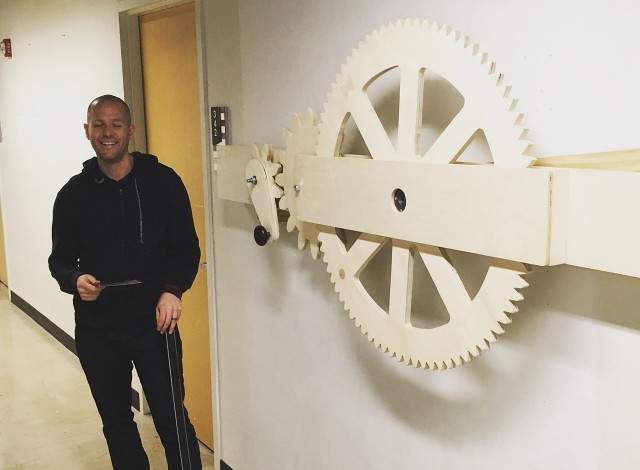
I’ve been using LaserCut 5.3 to control a G.Weike LC1390N Laser Cutter, and since I use Inkscape to create my files, I thought I’d go over a few of the settings I use so that in the future when I forget I can read this post.
I won’t go too deep into using Inkscape for laser cutting, as it’s a topic I’ve covered before, and besides having to use DXF files instead of PDF files, nothing else has really changed.

In the image above you’ll see a file being exported from Inkscape as a DXF file for a “Desktop Cutting Plotter” which, I guess, is one way to describe a laser cutter. :) I’ve avoided selecting the ROBOMASTER option, as that does strange things to DXF files. I’ve also avoided the LWPOLYLINE option. While the LWPOLYLINE option sometimes works, it sometimes causes issues. Don’t select either option when outputting from Inkscape to import into LaserCut 5.3.
I create my files using millimeters for units, and then export the DXF with pixels (px) specified. I believe there is still a bug in Inkscape that will screw things up if you choose millimeters for the export. (We’ll double check the imported size later to make sure it worked properly.) One more nice thing about Inkscape is that it’s easy to switch between millimeters and inches (or other units) on the fly while drawing.

When importing the DXF file into LaserCut 5.3 it may show some weird dialog. Ignore it. Files seem to import fine even when this shows up. Also, occasionally LaserCut 5.3 will not import a file, or will get an error. If that happens, just quit and relaunch it. That usually fixes it.

Our file has imported and looks okay. You’ll notice that the lines in the file are all black, well, actually they are all red here, as they are highlighted because they are selected. (Anyway, I forgot to set colors for some objects, but we’ll touch on that later.)

After importing your file you can check the size of it using the “Size” button in the toolbar to bring up the size dialog when your object is selected. It will show the length and height (well, it calls them both “length”) and some boxes where you can type in new values.

Pro-tip: If you fill in one value to scale your object, you can scale it proportionately by clicking the ‘…’ button on the other value. Here I’ve typed “100” in the x value box and then clicked the ‘…’ button on the y value box.

The other trick I’ve learned from the folks at Brown Dog Gadgets is to use the “Unite Lines” feature.

I just use the default settings it presents…

This combines the individual line segments that the DXF file is made up of into continuous lines, like a real vector file. It helps the laser cut things in a way that makes sense instead of jumping all around the object.

Here’s what I forgot to do in the above example. I’ve set specific items to specific colors in Inkscape, so that when I bring the DXF file into LaserCut 5.3 I can use the colors to change the order of cutting operations.

Here’s our DXF file imported into LaserCut 5.3 with the colors of the lines showing. Up in the right corner you can see where LaserCut 5.3 recognizes all of the colors in the file and allows you to choose individual settings as well as the order. Typically you want to cut inside pieces first and then outside pieces.
Finally, I’ve relied heavily on the work of others, and here are some links that might prove helpful when using LaserCut 5.3 and a G.Weike laser cutter. (And yes, some of it may conflict with what I’ve posted here. Again, if I got anything wrong, please let me know.)























